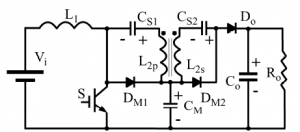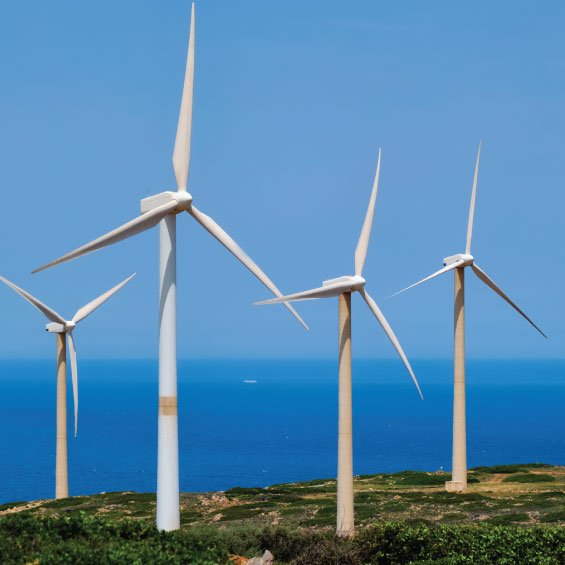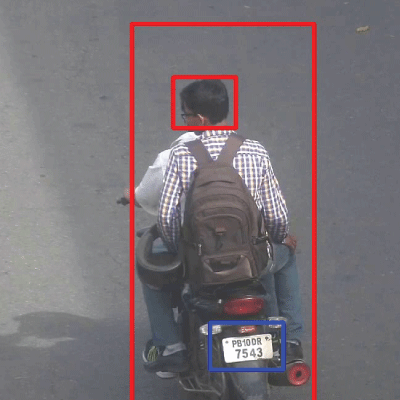Description
Modified sepic converter with high static gain for renewable applications
OBJECTIVE:
- In this paper, two high static gain step-up DC-DC converters based on the modified SEPIC converter are presented.
- The proposed topologies present low switch voltage and high efficiency for low input voltage and high output voltage applications.
- The configurations with magnetic coupling and without magnetic coupling are presented and analyzed.
- The magnetic coupling allows the increase of the static gain maintaining a reduced switch voltage.Modified sepic converter with high static gain for renewable applications
EXISTING SYSTEM:
- When a high step-up ratio is necessary for the implementation of the first power stage, the usual solution is the use of isolated DC-DC converters.
- The power converters used with renewable energy sources must present a high efficiency due to the high cost of the energy source, as photovoltaic module or fuel-cells.
- Only part of the power processed by the converter is transferred to the output through the coupling inductor and another part of the power is transferred directly by the non isolated converter, reducing the weight, volume and losses of the transformer.
- The leakage inductance is a problem for the single switch isolated DC-DC converters resulting in switch overvoltage and the energy stored in the leakage inductance must be dissipated in snubber or clamping circuits.Modified sepic converter with high static gain for renewable applications
PROPOSED SYSTEM:
- modified SEPIC DC-DC converter is developed in this paper
for low DC input voltage and high output voltage applications. The topology using magnetic coupling with the inclusion of an inductor auxiliary winding operating as a fly back transformer is also presented and studied in this paper in order to increase the static gain maintaining low switch voltage. - An isolated active clamp SEPIC-fly back converter is presented in order to obtain high efficiency. However, the proposed topology presents pulsating input current and the active clamp technique increases the converter complexity with an additional controlled switch and command circuit.
- the proposed converter with transformer in order to obtain ZCS turn-on commutation and
to reduce the diodes reverse recovery current, increasing the converter efficiency. The energy stored in the leakage inductance is transferred to the converter output through the
diodes and capacitor of the circuit. The voltages in all semiconductors are clamped by the intrinsic converter operation without dissipative components.
Modified sepic converter with high static gain for renewable applications
Circuit diagram:

Block diagram
Advantages:
- High efficiency.
- Reducing the commutation losses
- Higher static gain
- Reducing the converter duty cycle and the switch voltage.
Applications:
- SMPS
- Solar panel
- Portable electronic equipment
Modified sepic converter with high static gain for renewable applications
Reference:
[1] C. W. Li, X. He, ?Review of Non-Isolated High Step-Up DC/DC Converters in Photovoltaic Grid-Connected Applications?, IEEE Transactions on Industrial Electronics, vol. 58, no. 4, pp.1239-1250, April 2011.
[2] C. S. B. Kjaer, J. K. Pedersen and F. Blaabjerg, ?A Review of Single-Phase Grid-Connected Inverters for Photovoltaic Modules?, IEEE Transactions on Industry Applications, vol. 41, no. 5, pp. 1292-1306, September 2005.
[3] D. Meneses, F. Blaabjerg, O. Garcia and J. A. Cobos, ?Review and Comparison of Step-Up Transformerless Topologies for Photovoltaic AC-Module Application?, IEEE Transactions on Power Electronics, vol. 28, no. 6, pp. 2649- 2663, June 2013.





































































































































































































































































































































































































































































































































































































































































































































































































































































































































































































































































Customer Reviews
There are no reviews yet.